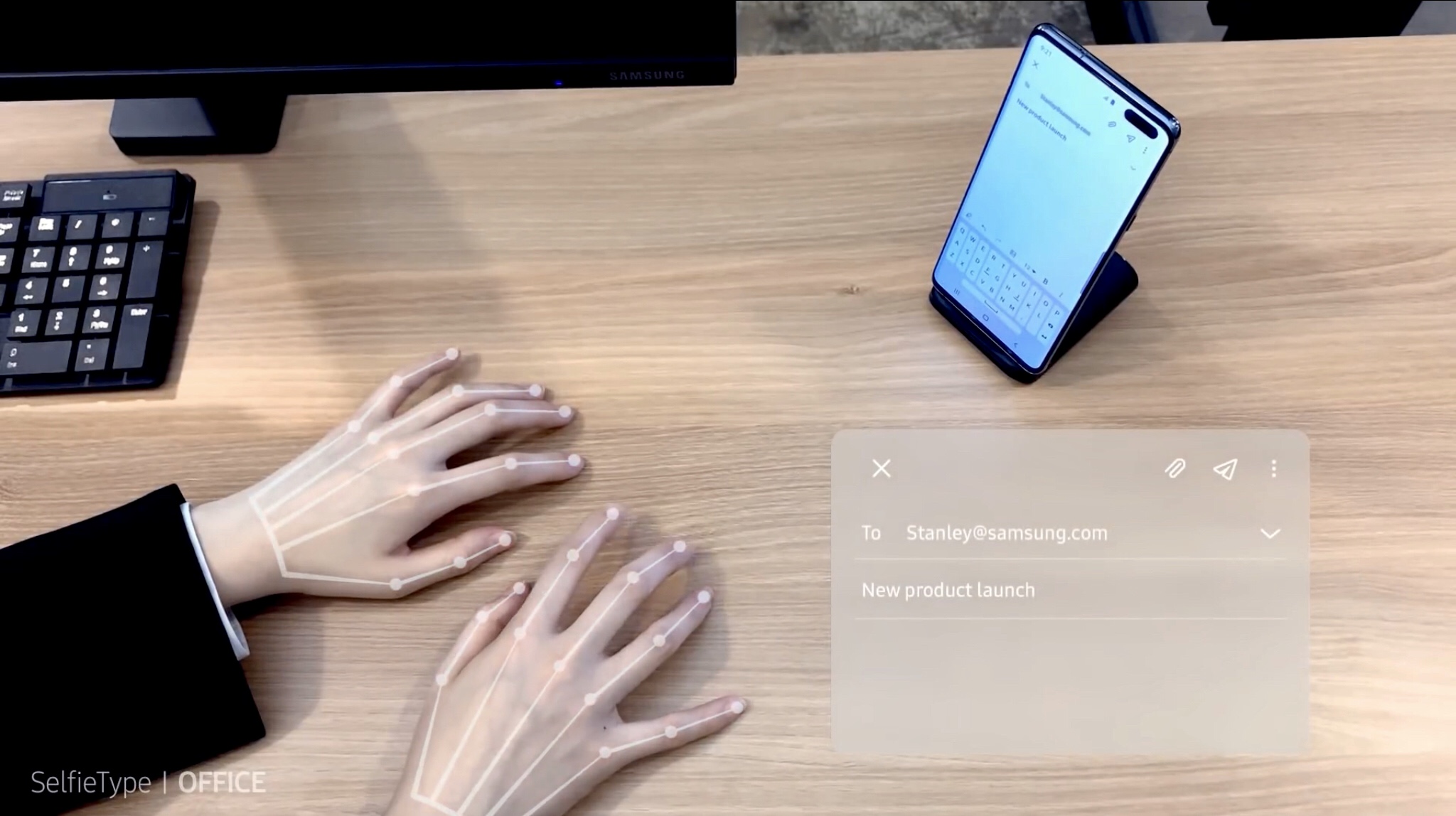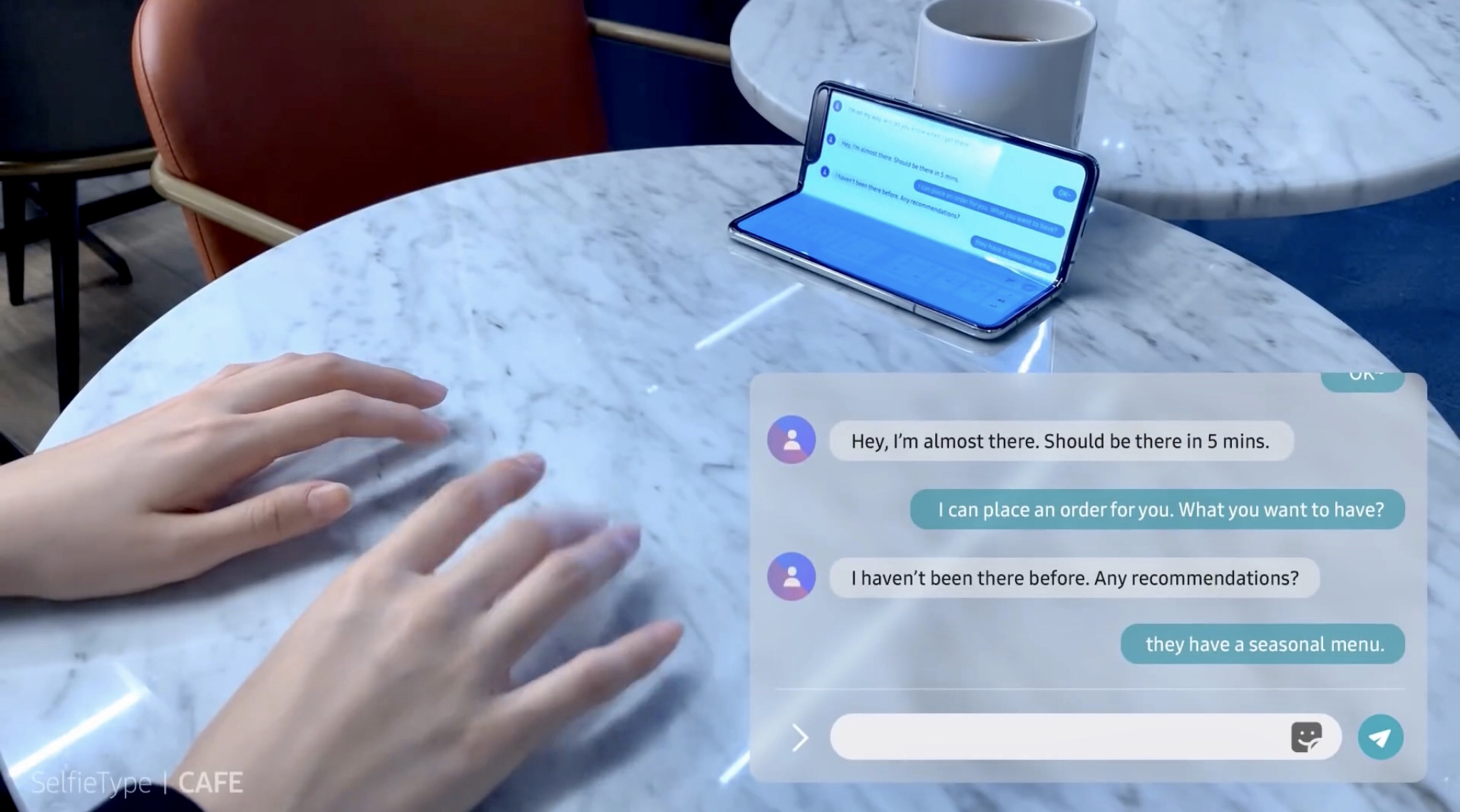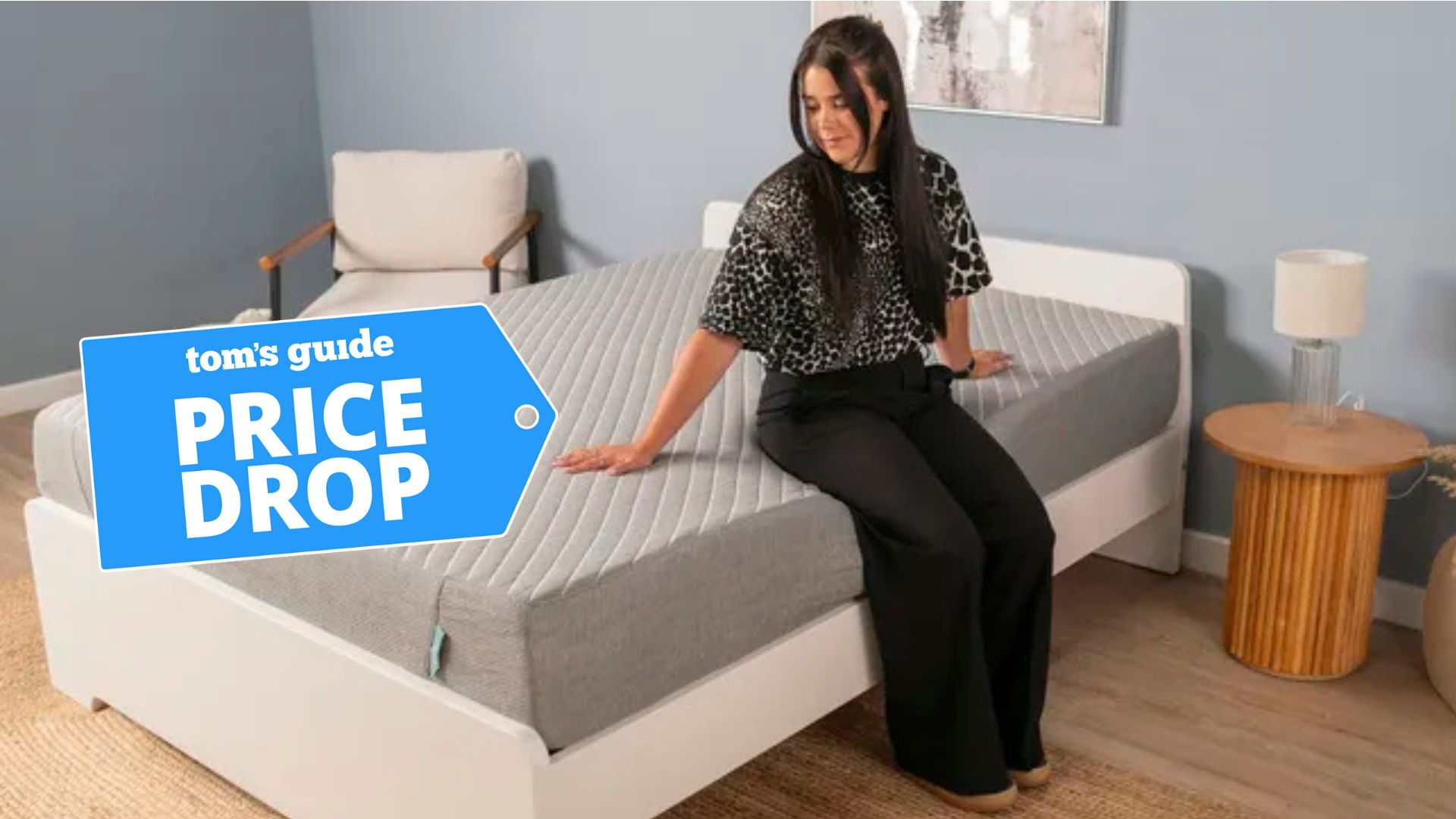Samsung's 'Selfie Type' could turn any surface into a smartphone keyboard
At last, a worthy use for the selfie camera

Samsung may announce a new phone keyboard at CES 2020. It isn’t physical and it isn’t on your screen.
Its name is Selfie Type and it uses the Galaxy’s selfie camera plus AI to track your hands, allowing you to type on an invisible full size keyboard on any surface. It may sound like a gimmick but this may actually work great. Take a look.
At first sight, Selfie Type reminded me of the awkward — and basically useless — laser-based projection keyboards from the Sharper Image catalog. Those thingamajigs project a keyboard on a desk and require users to hit its laser-drawn keys. The tracking was not that good, delivering lower speed and accuracy than software keyboards on phones.
Selfie Type doesn’t require any peripheral and doesn’t project anything. Instead, it uses the Galaxy’s camera to simply track your hands as you memory type. According to the information posted by a user in Samsung’s community site, “Selfie Type is a technology that utilizes the front camera and AI to analyze finger position and type without physical buttons.”
According to the source, who claims that Samsung will introduce it at CES 2020 this week, only English is currently supported. It seems pretty simple: just put your phone or tablet on a vertical position — or, if you have a Galaxy Fold, set it up in L-mode — and start typing with your fingers pretending you are hitting actual keys. Selfie Type appears to support gestures too, like pinching the air to send a message.
Selfie Type reminds me of Leap Motion’s augmented reality “wearables” (seen above). Created by Keiichi Matsuda, those virtual devices also rely on cameras to accurately track your hands in 3D space.
But, unlike Matsuda’s AR gadgets, Selfie Type doesn’t provide any visual feedback whatsoever. That’s not necessarily bad — typing is a mechanical memory action for many people who type on physical keyboards. I don’t look at my keyboard while typing at all.
Sign up to get the BEST of Tom's Guide direct to your inbox.
Get instant access to breaking news, the hottest reviews, great deals and helpful tips.
Yes, my hands have the position of the keys memorized and I rely on the spacebar to position them correctly in order to type quickly. But that’s where AI is supposed to kick in, just like with Gboard’s finger sliding, where reaching the right letters with total accuracy is not critical for you to produce the word you want.

Obviously, that means that Selfie Type won’t be for everyone, but it also means that it won’t slow down its target users because it won’t require memory typists to hit precise targets, making it all a completely instinct-based process. If the AI is really clever enough to correct any mistakes on the fly, I don’t see why it wouldn’t be able to do just that. All my reservations about weird keyboard concepts autocorrecting me on the fly disappeared with finger slide typing. I use that daily and it does a really good job even while it doesn’t match my physical keyboard typing speed.
If Selfie Type really works like the demo video shows, I can really see myself using this regularly. And I can see Google finally putting Project Soli to good use too, as that won’t even require you to put your phone on a stand — the only real drawback I see to Selfie Type unless you have a foldable phone or a tablet with built-in stand.
Samsung's CES 2020 press conference kicks off today (Jan 6) at 6:30 p.m PT / 9:30 p.m ET, and could mark the official debut of Selfie Type in addition to a variety of new 5G and smart home products. Be sure to bookmark our CES 2020 news hub for all of the latest out of Las Vegas.
Jesus Diaz founded the new Sploid for Gawker Media after seven years working at Gizmodo, where he helmed the lost-in-a-bar iPhone 4 story and wrote old angry man rants, among other things. He's a creative director, screenwriter, and producer at The Magic Sauce, and currently writes for Fast Company and Tom's Guide.

